A classic breakfast dish, hot dry noodles deliver exciting flavours, pleasant textures and are very easy to make!
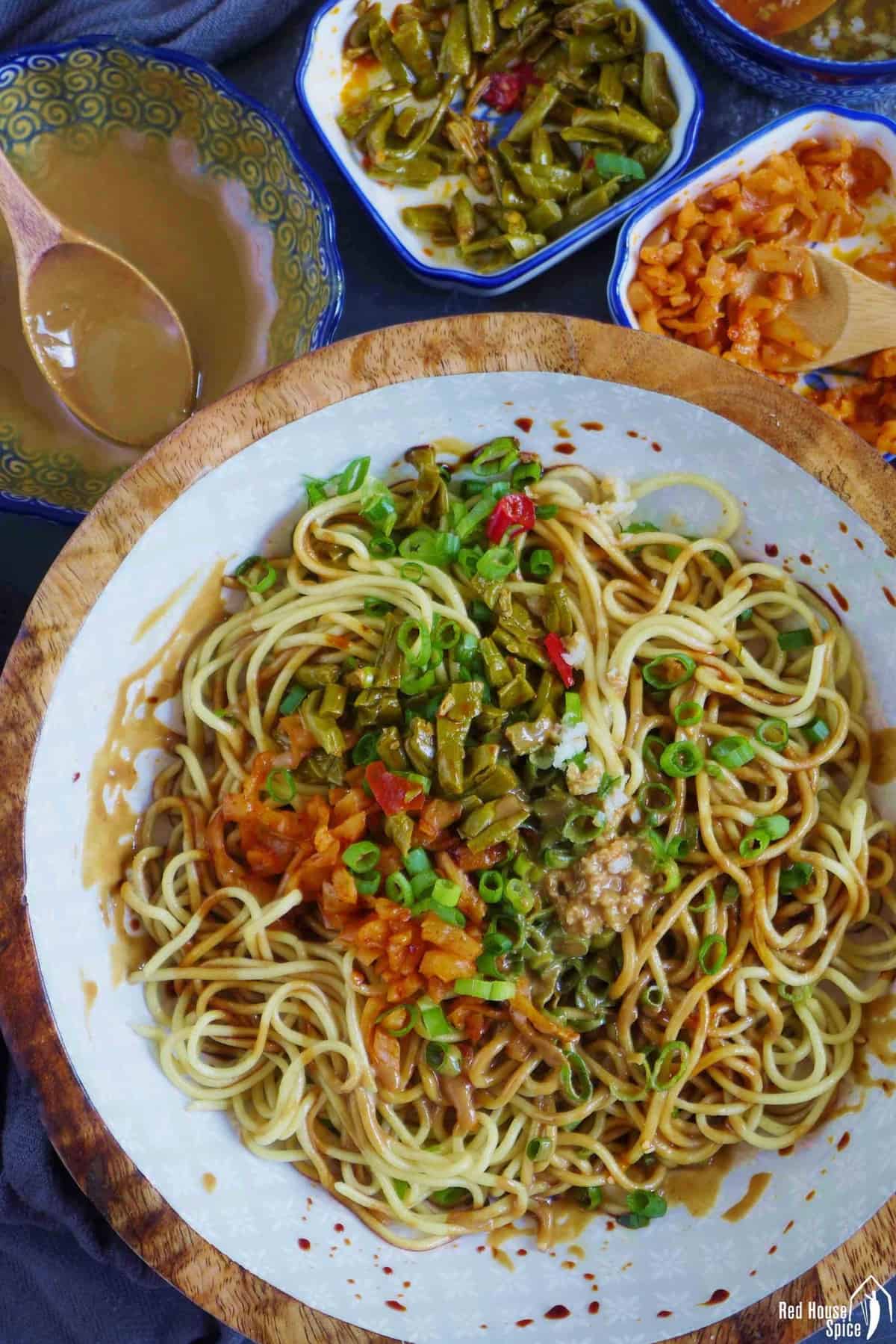
Are noodles your choice of breakfast? I certainly enjoyed them over the years: Beef Noodle Soup during my teenage years in Lanzhou and today’s recipe Hot Dry Noodles during my university life in Wuhan, a city famous for its diverse breakfast culture.
Flavourful and comforting, a bowl of freshly made hot dry noodles prepares the majority of Wuhan locals for a busy day. The name of the dish indicates some of its key features:
- “Hot”, meaning physically hot not spicy hot, differentiates it from Chinese cold noodle dishes (Liang Mian/凉面).
- “Dry” suggests that it doesn’t come with a soup/broth but only dressings and toppings.
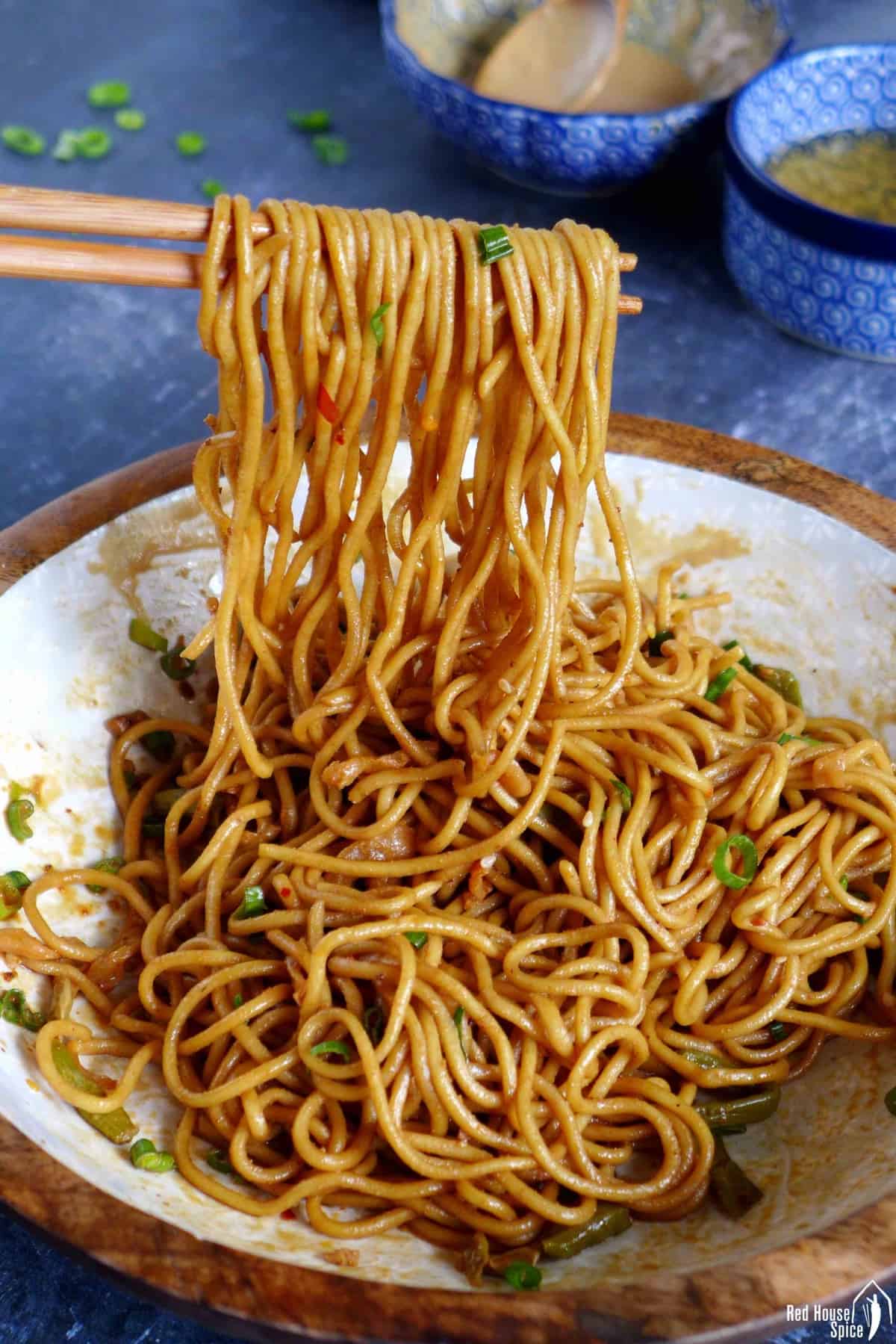
If you’re a fan of the famous Sichuan Dan Dan noodles or Chinese Sesame Noodles, this is definitely your recipe to try. These two dishes share some similarities, e.g. the use of sesame paste and preserved vegetables, the intense flavour, etc. But hot dry noodles are even simpler to make: Boil the noodles. Add the seasonings and toppings. Mix and enjoy!
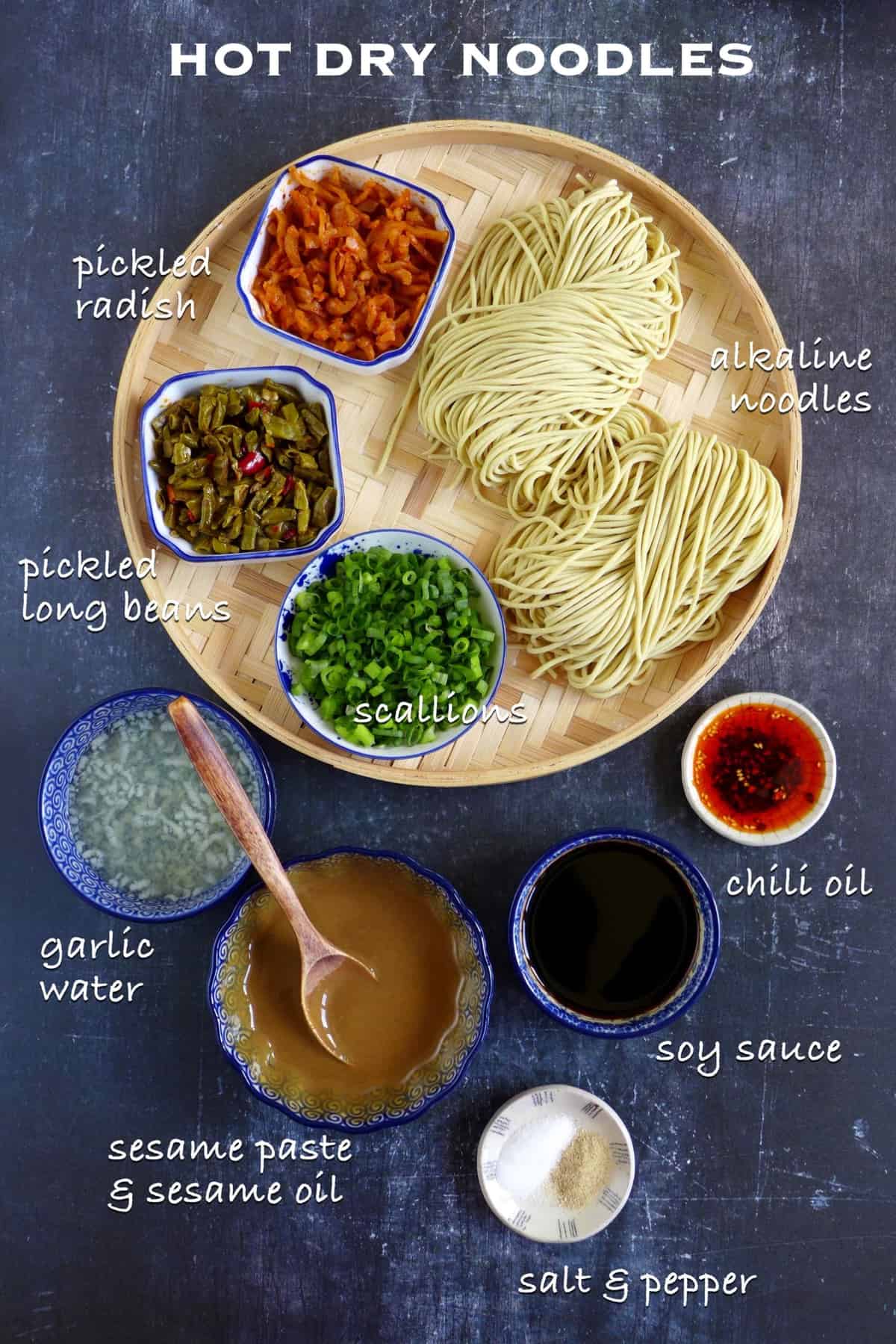
What type of noodles
The original Wuhan hot dry noodles call for round, yellowish, medium-sized alkaline noodles (aka ramen noodles, 碱水面). Thanks to the alkaline agent, this type of noodles have a bouncy, springy texture and a pleasant hint of alkaline taste.
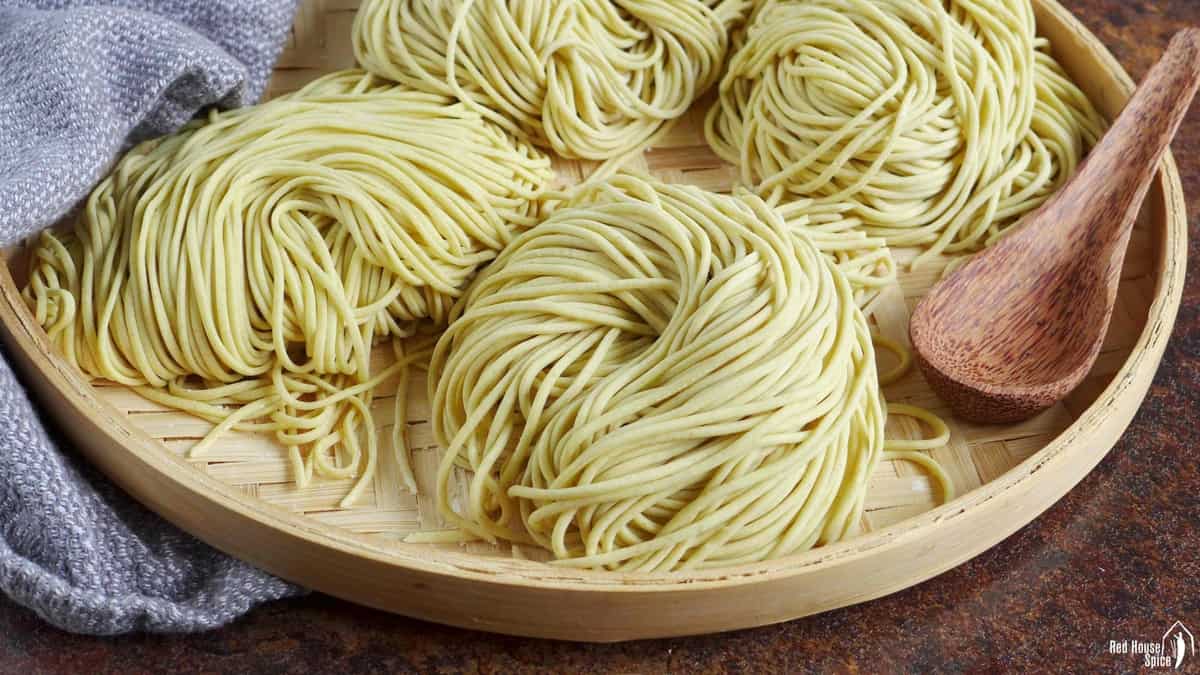
You can use shop-bought dried ramen noodles (not the instant type though). But if you’re keen to replicate the dish in its most authentic way, make some yourself! I have a recipe for Homemade Alkaline Noodles that includes detailed instructions and a tutorial video.
Substitutes:
Apart from the regular version with alkaline noodles, hot dry noodles are sometimes served with rice noodles, known as Re Gan Fen (热干粉) in Chinese. So it’s a perfect gluten-free alternative (make sure you use gluten-free soy sauce in this case).
Another substitute is spaghetti. It may sound strange to use Italian pasta in a classic Chinese dish but it does work quite well. Although lacking alkaline flavour, spaghetti delivers a similar look, colour and texture.
How to cook the noodles
To make a great bowl of hot dry noodles, the first and foremost thing is to cook the noodles to perfection. The key is not to overcook. The noodles should taste reasonably firm and have a little resistance when bitten. Soggy, mushy noodles are what you need to avoid.
The traditional method
At Wuhan’s breakfast stalls, hot dry noodles are served in a super speedy way. The chefs would dip the noodles in boiling water for just a few seconds. This is because they are pre-cooked before the stalls open for business.
If you’d like to follow this traditional, two-step cooking procedure, here is what you need to do:
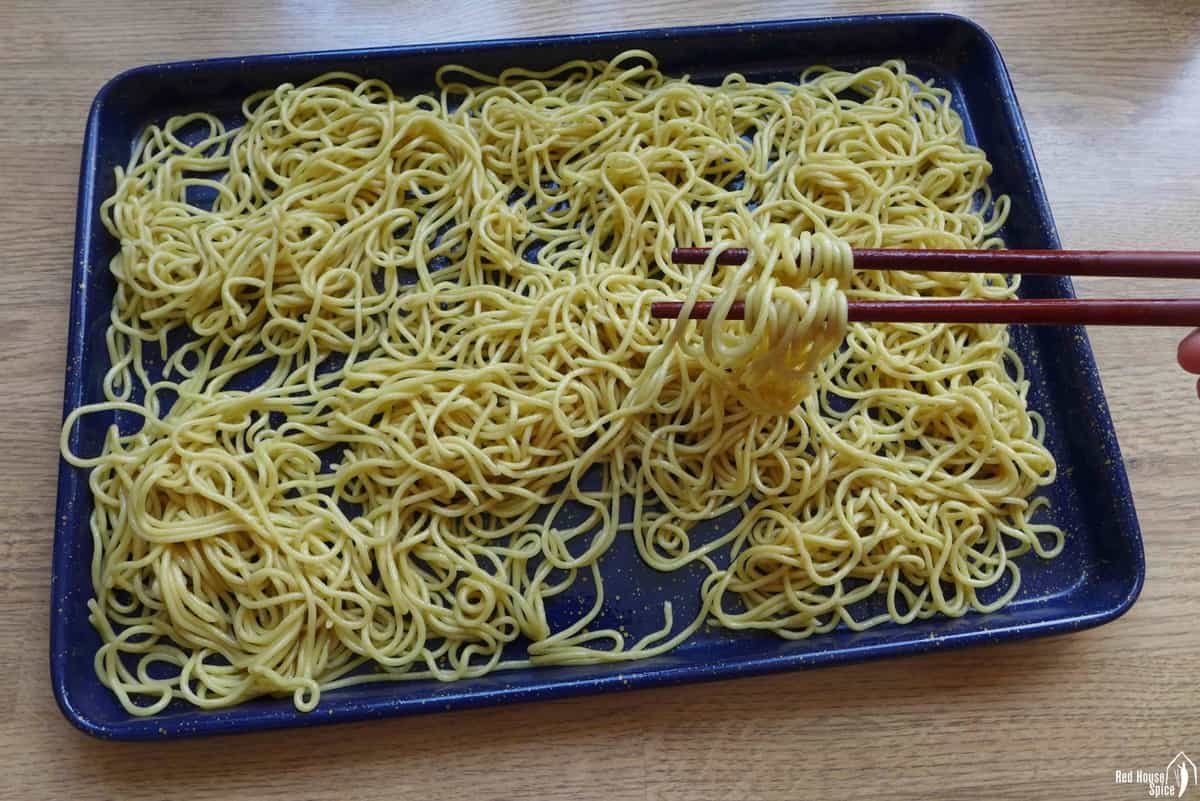
- Bring a large pot of water to a full boil. Add the noodles and cook until they become “Al dente” (just cooked and firm in the middle when bitten).
- Drain and transfer the noodles to a tray and coat them with a little sesame oil. Lift and drop the noodles with chopsticks in a fast and repeated fashion to cool the noodles (Stall owners usually use electric fans to accelerate the process).
- Once cooled, these noodles can be kept on the counter for several hours or in the fridge for up to 3 days. Whenever needed, just drop them in boiling water for a few seconds to warm up.
The fast method
The traditional method is great when you plan to prepare part of the dish in advance. But if you’re serving it right away, this technique seems overly complicated. Here is the alternative fast method:

- Add the noodles to boiling water and cook until “al dente”.
- Drain them immediately then rinse under running water for a few seconds to remove extra starch.
🛎 Tip: To test for “al dente” texture, pinch a noodle with your finger. It should break quite easily but it doesn’t feel gummy or starchy.
Sesame paste is indispensable
Chinese sesame paste (Zhi Ma Jiang/芝麻酱) is the core seasoning for hot dry noodles. Unfamiliar with this condiment? Here are its key characteristics:
- It’s made of toasted whole sesame seeds. This makes it different from Tahini (the main component of hummus) which is usually made with raw, hulled sesame seeds (sometimes lightly toasted).
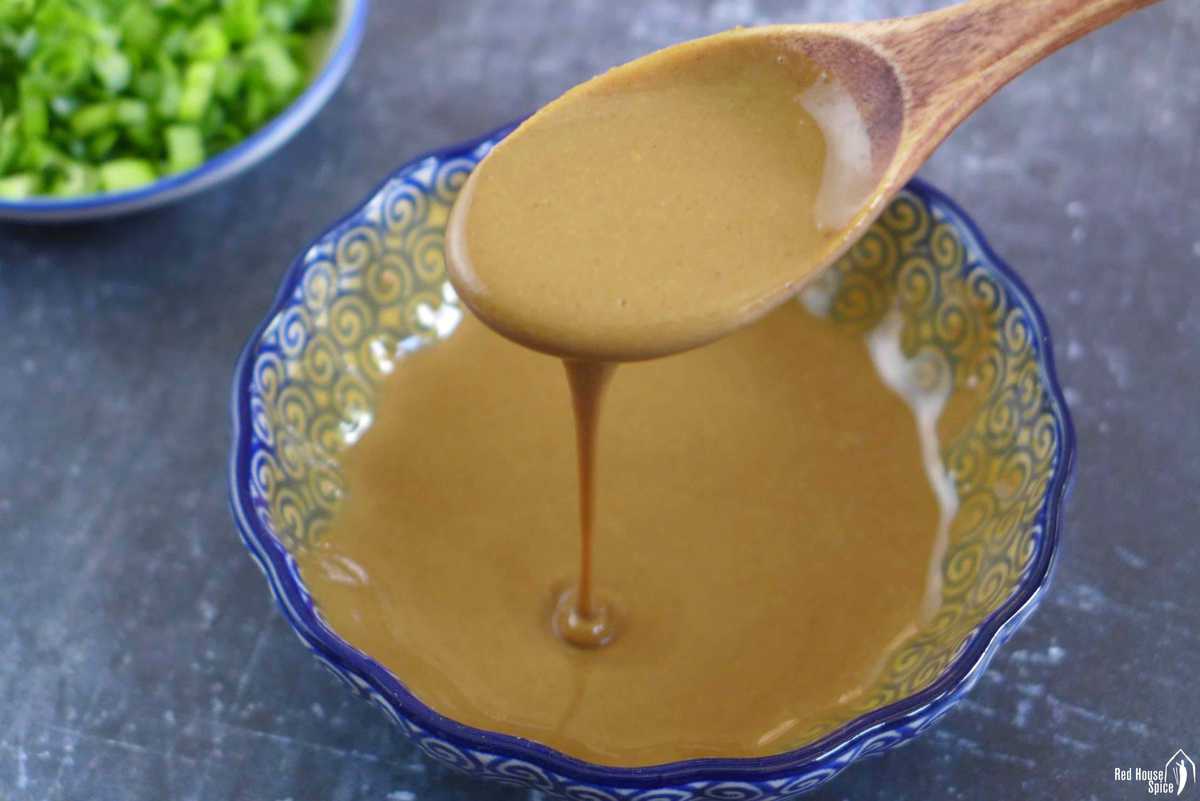
- It has a dark brown colour and a very thick consistency. You’ll need to thin it with water before adding it to dishes (add some sesame oil if you want to enhance its flavour).
Sesame paste is available in most Chinese/Asian stores. Apart from pure sesame paste which I use for today’s recipe, some brand, e.g. Wangzhihe/王致和, also produces a version that contains 50% of sesame seeds and 50% of peanut. If using this type, you’d need less water to thin it.
Unable to find sesame paste? Check out my post on Three Substitute Ideas for Sesame Paste to get some inspiration.
Preserved vegetables
Another important component of hot dry noodles is the flavourful toppings. They usually consist of 2-3 types of preserved vegetables which lend saltiness and umami taste to the dish. What I used are two classic choices:
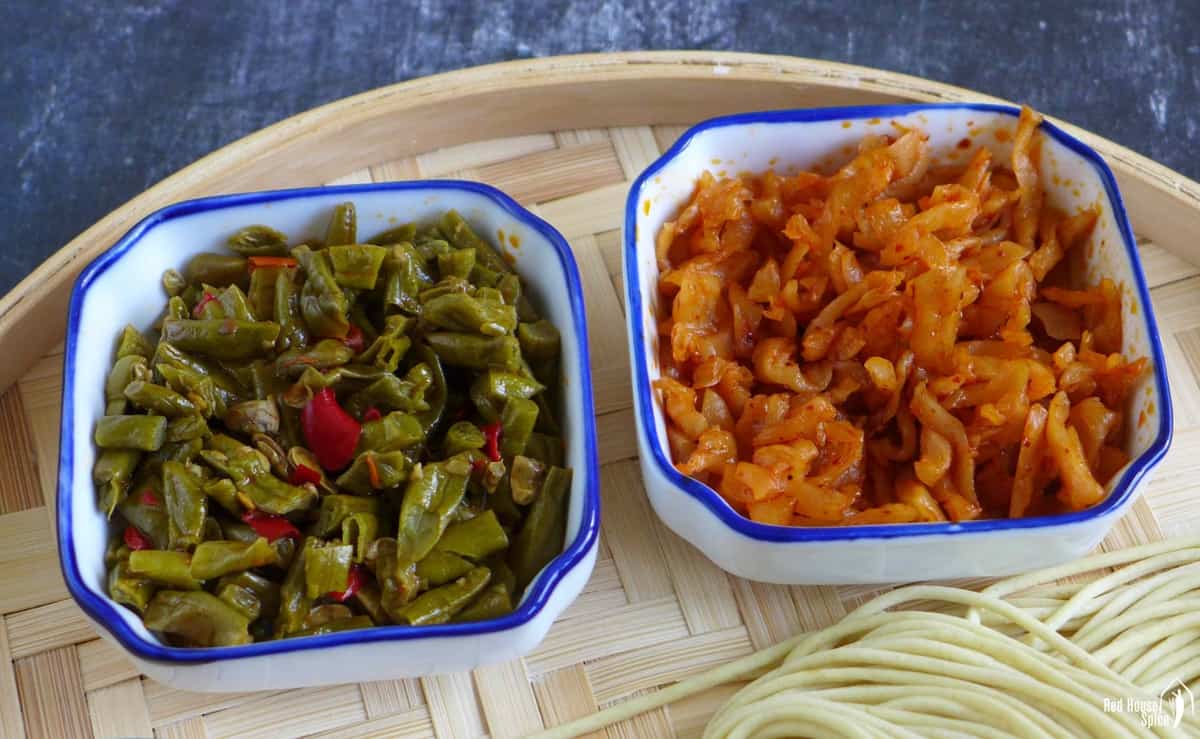
- Pickled long beans (酸豇豆)
- Preserved daikon radish (辣萝卜干)
Not only do they add another layer of flavour, they also provide a crunchy “mouthfeel” (Chinese appreciate the mix and match of textures very much). Usually in sachets or jars, they can be found in most Chinese stores.
🛎 Substitutes: Preserved mustard stem (Zhacai/榨菜) is a good alternative and it’s more commonly available. Pickled chilies could work too.
Other seasonings
Apart from sesame paste and preserved vegetables, you also need the following seasonings:
- Sesame oil. I add it to the sesame paste to enhance the nutty, aromatic flavour. It also helps to effectively thin the paste.
- Minced garlic. Soak it in hot water to decrease its sharpness but release more aroma.
- Light and dark soy sauce. The dark version is for giving the noodles a brown shine. If unavailable, just use the light one.
- Salt & ground white pepper
- Chili oil. It’s optional but I highly recommend it.
Serve the Noodles
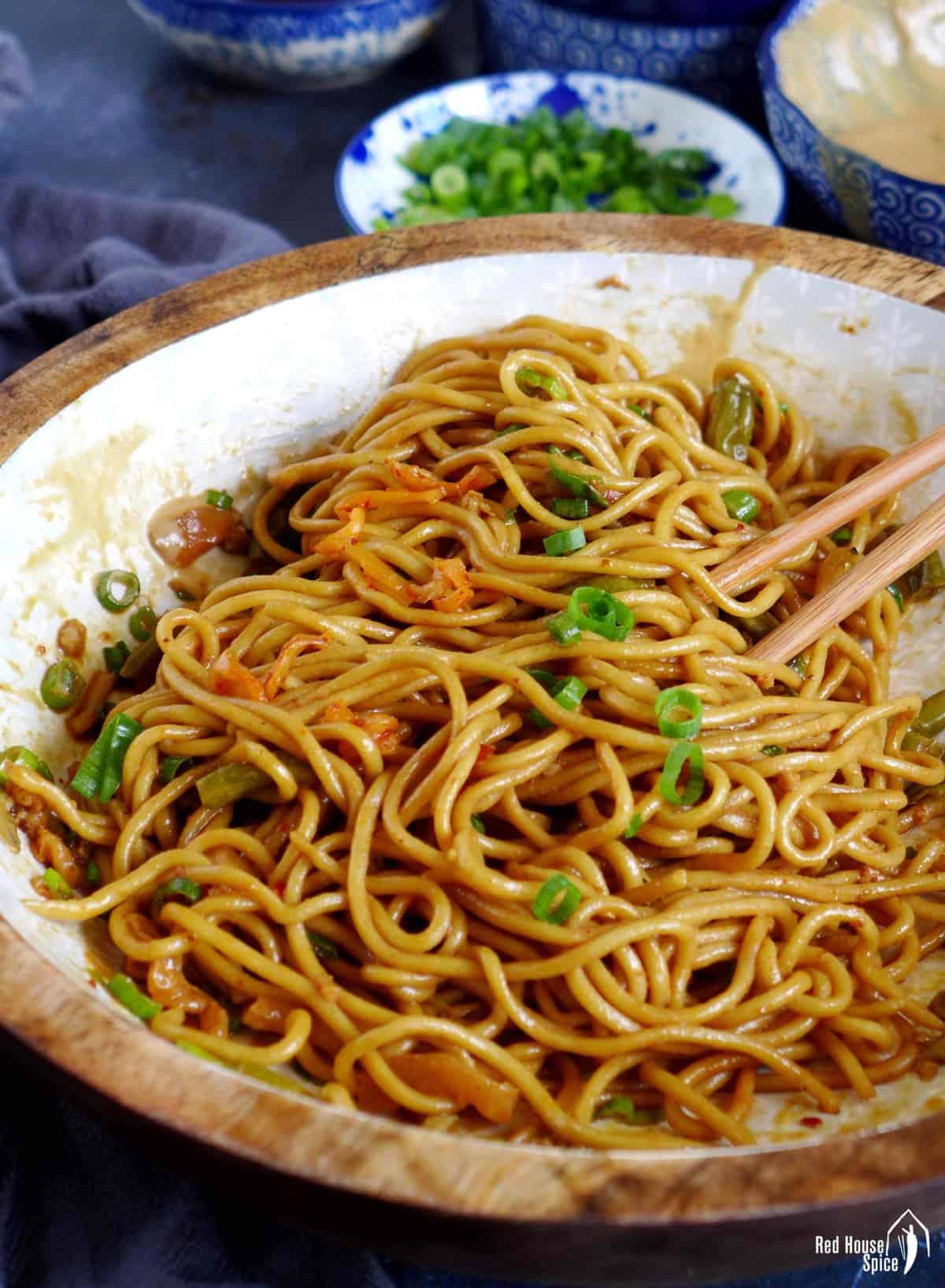
Once all the ingredients are put into the serving bowl, it’s important that you stir and mix the noodles without delay. If you leave them to sit for too long, the noodles strands will become sticky thus difficult to separate.
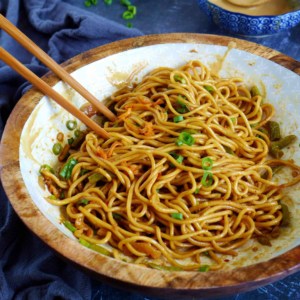
Hot Dry Noodles (Re Gan Mian, 热干面)
Ingredients
- 2 portions alkaline noodles - see note 1 for substitutes
For the dressing
- 2 tablespoon sesame paste - see note 2
- ½ tablespoon sesame oil
- 2 cloves garlic, minced
- 2 tablespoon light soy sauce
- 1 teaspoon dark soy sauce
- Salt
- Ground white pepper
- homemade chili oil - optional
For the toppings
- Pickled long beans (酸豇豆), chopped - See note 3
- Preserved daikon radish (萝卜干), chopped - See note 3
- Scallions, finely chopped
Instructions
- Heat up a large pot of water. While waiting for the water to boil, add sesame paste, sesame oil and 1 tablespoon of water to a bowl. Stir to thin the paste until it reaches a smooth and runny consistency.
- Put minced garlic into another small bowl. Once the water starts to boil, spoon out 2 tablespoon of hot water and pour over the garlic. Set aside.
- Add alkaline noodles to the boiling water. Cook until they’re “Al dente” (just cooked and firm in the middle when bitten).
- Rinse the noodles under running water for a few seconds then drain. Divide them into 2 serving bowls (see note 4).
- For EACH bowl, add 1 tablespoon of light soy sauce, ½ teaspoon of dark soy sauce, 1 pinch of salt, 1 pinch of ground white pepper and a dash of chili oil if using.
- Divide the thinned sesame paste and garlic water and add to the 2 bowls of noodles.
- Garnish with pickled long beans, preserved radish and scallions. Stir the noodles to evenly distribute the dressing. Serve immediately.
NOTES
NUTRITION
NUTRITION DISCLOSURE: Nutritional information on this website is provided as a courtesy to readers. It should be considered estimates. Please use your own brand nutritional values or your preferred nutrition calculator to double check against our estimates.


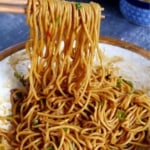
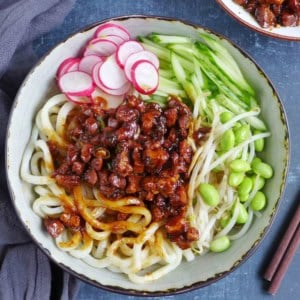
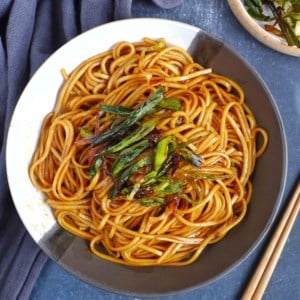


This recipe is absolutely perfect! 热干面 is one of my favorite simple dishes and is the reason why I always have 酸豇豆 in the house.
A place I used to go used chicken stock as a secret ingredient, and you could get the sauce on 饺子 as well. I’m definitely going to have to do that again!
Yes, a little chicken stock will definitely elevate the taste.
Thank you for posting recipie. Love noodles for breakfast!
My pleasure Sharen! Yes, noodles make a great start of the day.